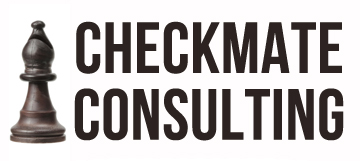In July 2007, I stumbled upon a video of a guy with nerdy glasses singing a song about the very-near release of Harry Potter and the Deathly Hallows. I was 17 years old, and Hank Green sang and charmed his way into my heart as both a Harry Potter fangirl and a social media user longing for community.
And that day, I became a Nerdfighter.
Nerdfighteria is an online community co-lead by two brothers: New York Times best-selling author John Green (author of a little book called The Fault in our Stars) and his little brother, Hank, who just so happens to run a conference called Vidcon that hosted more than 10,000 Youtube creators and community members last year. These two guys began as just brothers vlogging back and forth to each other each day as a simple video diary to reconnect as siblings. But along the way, they developed an online community with their Youtube channel that I not only did but actively wanted to be a part of as a consumer of digital media.
Their many successes, from CrashCourse to DFTBA Records to blockbuster movies and both scoring interviews with President Barack Obama, showcase how to keep momentum going once you go “viral.” But, in my mind more importantly, these two brothers show how forging communities and being in the community business generate success inherently. These brothers model that by being true to your personal and professional values and forging and authentically building communities, those communities will become loyal and do what you kindly ask. I pre-ordered all of John’s books because I liked John, not because I liked the synopses or the covers looked cool. I wanted to know what my friend on the Internet, John Green, had written — just like how I buy pizza from a pizza shop because the owner is snarky on Instagram and buy my favorite cookies at a local bakery that shares baking tips on Facebook.
I spend dollars to support communities and brands that connect with me.
John in his speech above at this year’s Youtube #Brandcast, a TED-esque infotainment event designed to court traditional mainstream advertisers, talked about how young users are demanding connection and engagement online. Consumers aren’t just buying, they’re looking for brands that talk back, that build communities and enrich lives.
Millennials and Generation Z kids are looking for brands that are authentically engaged in the culture of young consumers, and as marketers, we have an obligation to drop the act and to begin building online communities behind our brands. We need to stop pushing and start pulling; we need to stop selling and start connecting.
If there’s a currency for this next generation, it’s authenticity. We crave it, and we make our purchasing decisions because of it.
Now, I’m 25. I’m one of the so-called original Nerdfighers, one of the first 1,000 subscribers that started watching in 2007, and Hank and John have retired those camcorders that recorded their first vlogs. I’m not a senior in high school, I’m a social media professional (really), and John and Hank employ 30 people to help create the videos, events and projects they love. Their videos have been viewed more than a billion times. Almost as an afterthought, they’re making (a lot of) money doing what they love and being who they are, engaging authentically with their followers daily on Youtube, Twitter, Tumbly and even Snapchat.
I connect with Hank and John, and there are hundreds of thousands of other Nerdfighters who buy products, attend shows and support financially and with their voices the projects that Hank and John lead. They have their own empire — forged organically from a place of love authenticity and transparency.
But the vlogbrothers’ success is also a caution for old-school marketers trying, desperately, to be cool. If traditional brands don’t start forging digital communities like Nerdfighteria, they will lose relevance as fast as you can say “DFTBA.”


